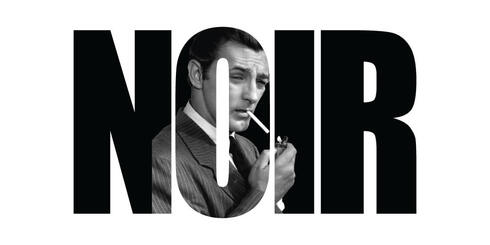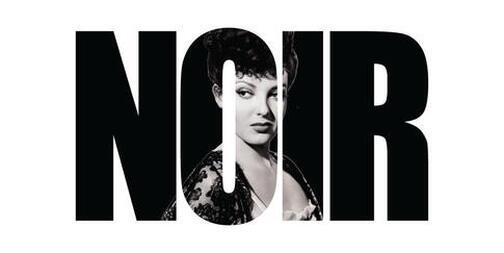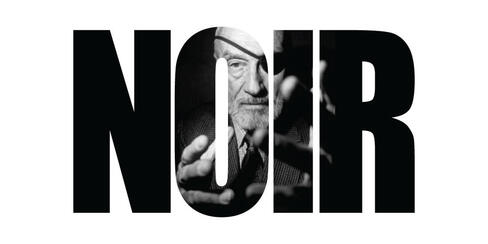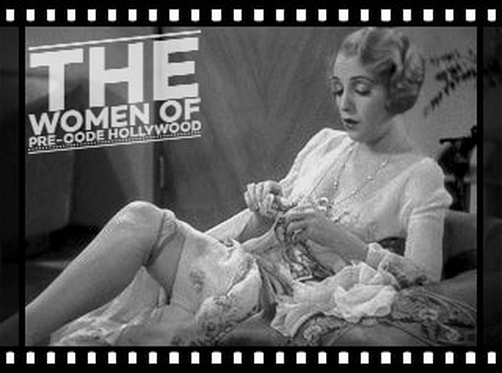JOAN CRAWFORD
AND FILM NOIR
While Joan Crawford is not primarily known for her contributions to the film noir genre, she did make notable appearances in a few films that can be categorized within the genre. Her performances in these films demonstrated her versatility as an actress and added a touch of glamour and complexity to the film noir landscape.
One of Joan Crawford's notable film noir roles was in the 1945 film "Mildred Pierce," directed by Michael Curtiz. While "Mildred Pierce" is often classified as a melodrama, it contains elements of film noir with its dark atmosphere and morally ambiguous characters. Crawford portrayed the title character, Mildred Pierce, a determined and ambitious woman who rises from humble beginnings to achieve success. The film explores themes of deceit, betrayal, and the sacrifices Mildred makes for her daughter. Crawford's nuanced performance earned her an Academy Award for Best Actress and showcased her ability to embody a complex and resilient female character within the framework of film noir.
Another film that showcased Crawford's talent in the film noir genre was "Sudden Fear" (1952), directed by David Miller. In this suspenseful thriller, Crawford played a successful playwright who becomes entangled in a plot orchestrated by her husband and his lover. Her performance captured the fear, vulnerability, and determination of her character, highlighting her ability to portray strong yet vulnerable women in perilous situations.
Additionally, Crawford appeared in "The Damned Don't Cry!" (1950), a crime drama with noir elements. In this film, she portrayed a woman who escapes her impoverished life and rises to power in the underworld, navigating the treacherous world of crime and greed.
While Joan Crawford's film noir filmography may not be as extensive as some other actresses associated with the genre, her performances in "Mildred Pierce," "Sudden Fear," and "The Damned Don't Cry!" showcased her ability to adapt to the darker, morally ambiguous themes and atmospheres of film noir. Her contributions added depth and complexity to the characters she portrayed within the genre, leaving a lasting impact on the film noir landscape.
One of Joan Crawford's notable film noir roles was in the 1945 film "Mildred Pierce," directed by Michael Curtiz. While "Mildred Pierce" is often classified as a melodrama, it contains elements of film noir with its dark atmosphere and morally ambiguous characters. Crawford portrayed the title character, Mildred Pierce, a determined and ambitious woman who rises from humble beginnings to achieve success. The film explores themes of deceit, betrayal, and the sacrifices Mildred makes for her daughter. Crawford's nuanced performance earned her an Academy Award for Best Actress and showcased her ability to embody a complex and resilient female character within the framework of film noir.
Another film that showcased Crawford's talent in the film noir genre was "Sudden Fear" (1952), directed by David Miller. In this suspenseful thriller, Crawford played a successful playwright who becomes entangled in a plot orchestrated by her husband and his lover. Her performance captured the fear, vulnerability, and determination of her character, highlighting her ability to portray strong yet vulnerable women in perilous situations.
Additionally, Crawford appeared in "The Damned Don't Cry!" (1950), a crime drama with noir elements. In this film, she portrayed a woman who escapes her impoverished life and rises to power in the underworld, navigating the treacherous world of crime and greed.
While Joan Crawford's film noir filmography may not be as extensive as some other actresses associated with the genre, her performances in "Mildred Pierce," "Sudden Fear," and "The Damned Don't Cry!" showcased her ability to adapt to the darker, morally ambiguous themes and atmospheres of film noir. Her contributions added depth and complexity to the characters she portrayed within the genre, leaving a lasting impact on the film noir landscape.
AVAILABLE FILMS:
ABOVE SUSPICION (1943)
ACROSS TO SINGAPORE (1928)
CHAINED (1934)
DAISY KENYON (1947)
DAMNED DON'T CRY, THE (1950)
FLAMINGO ROAD (1949)
FORSAKING ALL OTHERS (1935)
GRAND HOTEL (1932)
HOLLYWOOD CANTEEN (1944)
HUMORESQUE (1946)
JOHNNY GUITAR (1954)
LADY OF THE NIGHT (1925)
LAST OF MRS. CHEYNEY, THE (1937)
LAUGHING SINNERS (1931)
LOVE ON THE RUN (1936)
MANNEQUIN (1937)
MILDRED PIERCE (1945)
OUR DANCING DAUGHTERS (1928)
OUR MODERN MAIDENS (1929)
PAID (1930)
POSSESSED (1947)
RAIN (1932)
REUNION IN FRANCE (1942)
SADIE MCKEE (1934)
STRAIT JACKET (1964)
STRANGE CARGO (1940)
SUDDEN FEAR (1952)
SUSAN AND GOD (1940)
THIS WOMAN IS DANGEROUS (1952)
TODAY WE LIVE (1933)
TORCH SONG (1953)
UNKNOWN, THE (1927)
UNTAMED (1929)
WHEN LADIES MEET (1941)
WOMEN, THE (1939)
ACROSS TO SINGAPORE (1928)
CHAINED (1934)
DAISY KENYON (1947)
DAMNED DON'T CRY, THE (1950)
FLAMINGO ROAD (1949)
FORSAKING ALL OTHERS (1935)
GRAND HOTEL (1932)
HOLLYWOOD CANTEEN (1944)
HUMORESQUE (1946)
JOHNNY GUITAR (1954)
LADY OF THE NIGHT (1925)
LAST OF MRS. CHEYNEY, THE (1937)
LAUGHING SINNERS (1931)
LOVE ON THE RUN (1936)
MANNEQUIN (1937)
MILDRED PIERCE (1945)
OUR DANCING DAUGHTERS (1928)
OUR MODERN MAIDENS (1929)
PAID (1930)
POSSESSED (1947)
RAIN (1932)
REUNION IN FRANCE (1942)
SADIE MCKEE (1934)
STRAIT JACKET (1964)
STRANGE CARGO (1940)
SUDDEN FEAR (1952)
SUSAN AND GOD (1940)
THIS WOMAN IS DANGEROUS (1952)
TODAY WE LIVE (1933)
TORCH SONG (1953)
UNKNOWN, THE (1927)
UNTAMED (1929)
WHEN LADIES MEET (1941)
WOMEN, THE (1939)
VIDEO TRIBUTE:
Joan Crawford
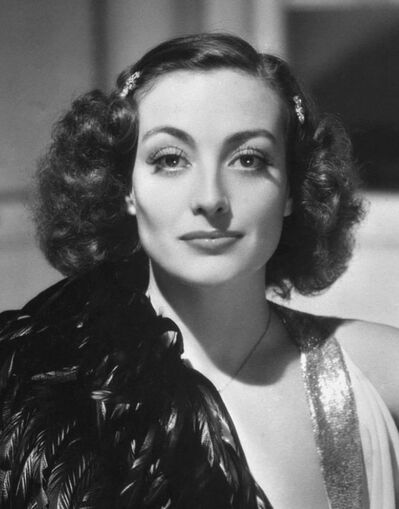
Joan Crawford, born Lucille Fay LeSueur on March 23, 1904, in San Antonio, Texas, was an American actress and one of the most prominent stars of Hollywood's Golden Age. She had a career that spanned over five decades, during which she became known for her versatility, intense screen presence, and determination to succeed.
Crawford began her career in the 1920s, initially as a dancer in various stage productions. She caught the attention of MGM studio executives and made her transition to the silver screen. In the 1930s, she rose to stardom with her performances in films such as "Grand Hotel" (1932), "Dancing Lady" (1933), and "The Women" (1939). Her early roles showcased her talent for both drama and comedy, and she quickly established herself as a versatile actress.
During the 1940s and 1950s, Crawford's career took a dramatic turn as she became associated with melodramatic and film noir roles. Her performances in films like "Mildred Pierce" (1945), directed by Michael Curtiz, and "Possessed" (1947), earned her critical acclaim and recognition. In "Mildred Pierce," Crawford portrayed a determined and self-sacrificing mother, winning the Academy Award for Best Actress and solidifying her position as a leading actress of her time.
Crawford's screen persona was often characterized by her fierce determination, steely resolve, and ability to portray women who defied societal expectations. She frequently played complex and strong-willed characters who navigated through personal struggles and faced challenges head-on.
In addition to her acting career, Crawford was known for her tireless work ethic and business acumen. She actively managed her image and successfully transitioned to different stages of her career, adapting to changes in the industry. Crawford's commitment to her craft and her professionalism made her one of the most respected actresses of her generation.
Later in her career, Crawford continued to work in film and television, although her prominence gradually diminished. She made her last film appearance in "Trog" (1970) and later ventured into television, appearing in episodes of various shows. Her final acting role was in the TV movie "Terror in the Wax Museum" (1973).
Joan Crawford's life off-screen was often the subject of public fascination. She had a tumultuous personal life and was known for her intense dedication to her career. Crawford's strong and independent persona became intertwined with her public image, and she remains an enduring figure in popular culture.
Joan Crawford passed away on May 10, 1977, in New York City, leaving behind a lasting legacy as one of Hollywood's iconic actresses. Her contributions to film, particularly in the realms of drama, melodrama, and film noir, continue to be recognized and appreciated by audiences and filmmakers alike.
Crawford began her career in the 1920s, initially as a dancer in various stage productions. She caught the attention of MGM studio executives and made her transition to the silver screen. In the 1930s, she rose to stardom with her performances in films such as "Grand Hotel" (1932), "Dancing Lady" (1933), and "The Women" (1939). Her early roles showcased her talent for both drama and comedy, and she quickly established herself as a versatile actress.
During the 1940s and 1950s, Crawford's career took a dramatic turn as she became associated with melodramatic and film noir roles. Her performances in films like "Mildred Pierce" (1945), directed by Michael Curtiz, and "Possessed" (1947), earned her critical acclaim and recognition. In "Mildred Pierce," Crawford portrayed a determined and self-sacrificing mother, winning the Academy Award for Best Actress and solidifying her position as a leading actress of her time.
Crawford's screen persona was often characterized by her fierce determination, steely resolve, and ability to portray women who defied societal expectations. She frequently played complex and strong-willed characters who navigated through personal struggles and faced challenges head-on.
In addition to her acting career, Crawford was known for her tireless work ethic and business acumen. She actively managed her image and successfully transitioned to different stages of her career, adapting to changes in the industry. Crawford's commitment to her craft and her professionalism made her one of the most respected actresses of her generation.
Later in her career, Crawford continued to work in film and television, although her prominence gradually diminished. She made her last film appearance in "Trog" (1970) and later ventured into television, appearing in episodes of various shows. Her final acting role was in the TV movie "Terror in the Wax Museum" (1973).
Joan Crawford's life off-screen was often the subject of public fascination. She had a tumultuous personal life and was known for her intense dedication to her career. Crawford's strong and independent persona became intertwined with her public image, and she remains an enduring figure in popular culture.
Joan Crawford passed away on May 10, 1977, in New York City, leaving behind a lasting legacy as one of Hollywood's iconic actresses. Her contributions to film, particularly in the realms of drama, melodrama, and film noir, continue to be recognized and appreciated by audiences and filmmakers alike.
quotes:
[In The Women (1939)] "Norma Shearer made me change my costume sixteen times because every one was prettier than hers. I love to play bitches and she helped me in this part."
"Nobody can imitate me. You can always see impersonations of Katharine Hepburn and Marilyn Monroe. But not me. Because I've always drawn on myself only."
"There was a saying around MGM: "Norma Shearer got the productions, Greta Garbo supplied the art, and Joan Crawford made the money to pay for both"."
[speaking to director George Cukor after learning of Marilyn Monroe's death] "You're right. She was cheap, and an exhibitionist. She was never professional, and that irritated the hell out of people. But for God's sake, she needed help. She had all these people on her payroll. Where the hell were they when she needed them? Why in the hell did she have to die alone?"
[on Judy Garland] "Over the years I've heard and read so many stories about the way Judy Garland was so badly treated at Metro she ended up a mess. I did not know her well, but after watching her in action a few times I didn't want to know her well. I think her problems were caused by the fact that she was a spoiled, indulgent, selfish brat--plus a stage mother who had to be something of a monster, and a few husbands whose egos absolutely dominated hers. There were times when I felt sorry for Judy, but there were more times when I thought, "For Christ's sake, get off your ass!" . . . but when she put her mind to it, she was good. And I mean damned good. Even in her silly pictures she came off."
[on filming Sudden Fear (1952)] "I have been reported dating Scott Brady and feuding with Gloria Grahame while we were shooting Sudden Fear (1952). But when you're making an independent picture you haven't time for sex or feuds - and I resent it because both make for a happy life!"
- Joan Crawford
trivia:
Was asked to take over Carole Lombard 's role in They All Kissed the Bride (1942) after Lombard died in an airplane crash returning from a war bond tour. Crawford then donated all of her salary to the Red Cross, which found Lombard's body, and promptly fired her agent for taking his usual 10%.
She had a cleanliness obsession. She used to wash her hands every ten minutes and follow guests around her house wiping everything they touched, especially doorknobs and pieces from her china set. She would never smoke a cigarette unless she opened the pack herself, and would never use another cigarette out of that pack if someone else had touched it.
Was forced by MGM boss Louis B. Mayer to drop her real name Lucille LeSueur because it sounded too much like "sewer".
She always considered The Unknown (1927) a big turning point for her. She said it wasn't until working with Lon Chaney in this film that she learned the difference between standing in front of a camera and acting in front of a camera. She said that was all due to Chaney and his intense concentration, and after that experience she said she worked much harder to become a better actress.
Her little tap dancing in The Hollywood Revue of 1929 (1929) was the first audible tap dance on the screen.
She had a cleanliness obsession. She used to wash her hands every ten minutes and follow guests around her house wiping everything they touched, especially doorknobs and pieces from her china set. She would never smoke a cigarette unless she opened the pack herself, and would never use another cigarette out of that pack if someone else had touched it.
Was forced by MGM boss Louis B. Mayer to drop her real name Lucille LeSueur because it sounded too much like "sewer".
She always considered The Unknown (1927) a big turning point for her. She said it wasn't until working with Lon Chaney in this film that she learned the difference between standing in front of a camera and acting in front of a camera. She said that was all due to Chaney and his intense concentration, and after that experience she said she worked much harder to become a better actress.
Her little tap dancing in The Hollywood Revue of 1929 (1929) was the first audible tap dance on the screen.

